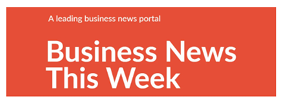Introduction
Choosing the right ERP system isn’t just about features—it’s about cost and whether that cost makes sense for your business. Many companies look at SAP Business One Price and compare it to traditional ERP systems, but what they don’t always realize is that the pricing models for these systems are very different.
Let’s take a closer look at how these pricing models work and why choosing the right one matters.
How Traditional ERP Pricing Works
Traditional ERP systems have been around for decades, and their pricing reflects that. These systems were originally designed for large corporations with the budget and IT resources to support them. Because of this, traditional ERP pricing tends to be rigid and costly.
High Upfront Costs
Most traditional ERP systems require businesses to buy a license before they can even start using the software. These one-time license fees can be extremely expensive, often making it difficult for smaller businesses to afford them.
Extra Charges for Customization
Traditional ERP systems aren’t always built for specific industries, so businesses often have to pay extra to have them customized to fit their needs. Customization usually requires hiring specialists, which adds to the total cost.
Ongoing Maintenance and Updates
Even after the system is set up, businesses using traditional ERP systems often have to pay for regular maintenance, system updates, and IT support. Without these, the system can quickly become outdated, causing delays and unexpected expenses.
Hardware and IT Costs
Most traditional ERP systems require on-premise servers, meaning businesses need to invest in expensive hardware and hire IT teams to manage the system. These costs can add up quickly, especially for companies that don’t already have an in-house IT department.
How SAP Business One Pricing Is Different
Unlike traditional ERP systems, SAP Business One Solution is designed with small and mid-sized businesses in mind. It offers flexible pricing and payment options, making it much more accessible to companies that don’t have the budget for a large-scale ERP system.
Subscription or One-Time Purchase
One of the biggest differences in SAP Business One Price is that businesses can choose between a one-time purchase (perpetual license) or a monthly subscription-based model. This makes it easier to select a payment plan that fits the company’s financial situation.
Lower Upfront Costs
Since there’s an option to pay monthly instead of all at once, businesses don’t have to worry about a huge initial expense. This makes SAP Business One Price more manageable compared to traditional ERP pricing.
Custom Features Without Extra Costs
Unlike traditional ERP systems that often require expensive customizations, SAP Business One Solution comes with built-in industry-specific features. This means that businesses don’t have to spend extra money on making the system work for them—it already does.
Cloud-Based Options Reduce IT Expenses
Since SAP Business One Solution offers cloud-based options, businesses don’t have to worry about buying expensive servers or hiring an IT team. Everything is managed through the cloud, reducing hardware costs and making it easier to maintain.
Which ERP Pricing Model Is Right for You?
Business Size and Budget
Traditional ERP systems might work well for large corporations that have the budget to support them. However, for small and mid-sized businesses, SAP Business One Solution is usually the better choice because of its lower upfront costs and flexible payment options.
How Quickly You Need to Get Started
Traditional ERP systems can take months (or even years) to fully implement. Since they require customization, hardware installation, and IT support, they can take a long time to set up. On the other hand, SAP Business One Solution is designed for faster implementation, so businesses can start using it much sooner.
Long-Term Costs
Many businesses focus on the SAP Business One Price compared to the upfront cost of traditional ERP systems, but the real cost of ownership includes maintenance, IT staffing, hardware, and future upgrades. When looking at the total cost over time, traditional ERPs often end up being much more expensive.
Flexibility and Future Expansion
A business that is growing quickly needs a system that can adjust to changing needs without requiring major upgrades or additional expenses. SAP Business One Solution allows businesses to add new users and features as they grow, while traditional ERP systems often require costly modifications.
Partnering with a trusted provider with several years of experience, such as Praxis Info Solutions, ensures a smooth transition to SAP Business One Solution, avoiding unnecessary costs and implementation delays while maximizing long-term benefits.
Conclusion
Choosing the right ERP pricing model isn’t just about picking the cheapest option—it’s about finding a system that fits your business’s needs without unnecessary costs or complications. Traditional ERP systems are expensive, time-consuming, and often require significant maintenance, while SAP Business One Solution provides a budget-friendly alternative that allows businesses to focus on what matters most.
If you’re considering an ERP system, don’t just look at the price—consider how the pricing model will impact your business in the long run. For most small and mid-sized businesses, SAP Business One Solution offers the right balance between cost, convenience, and practicality.

